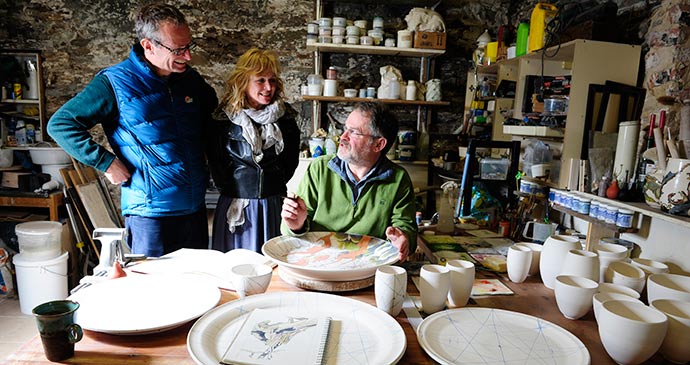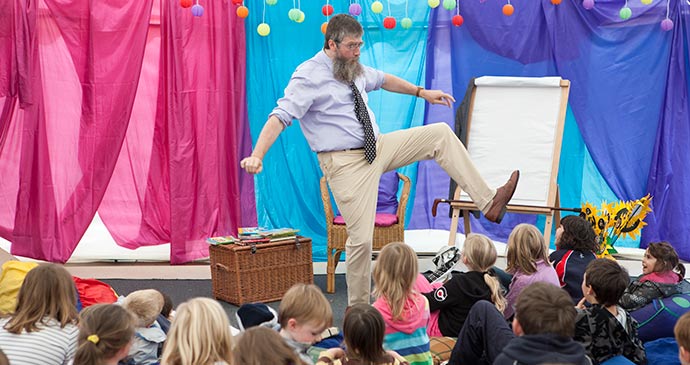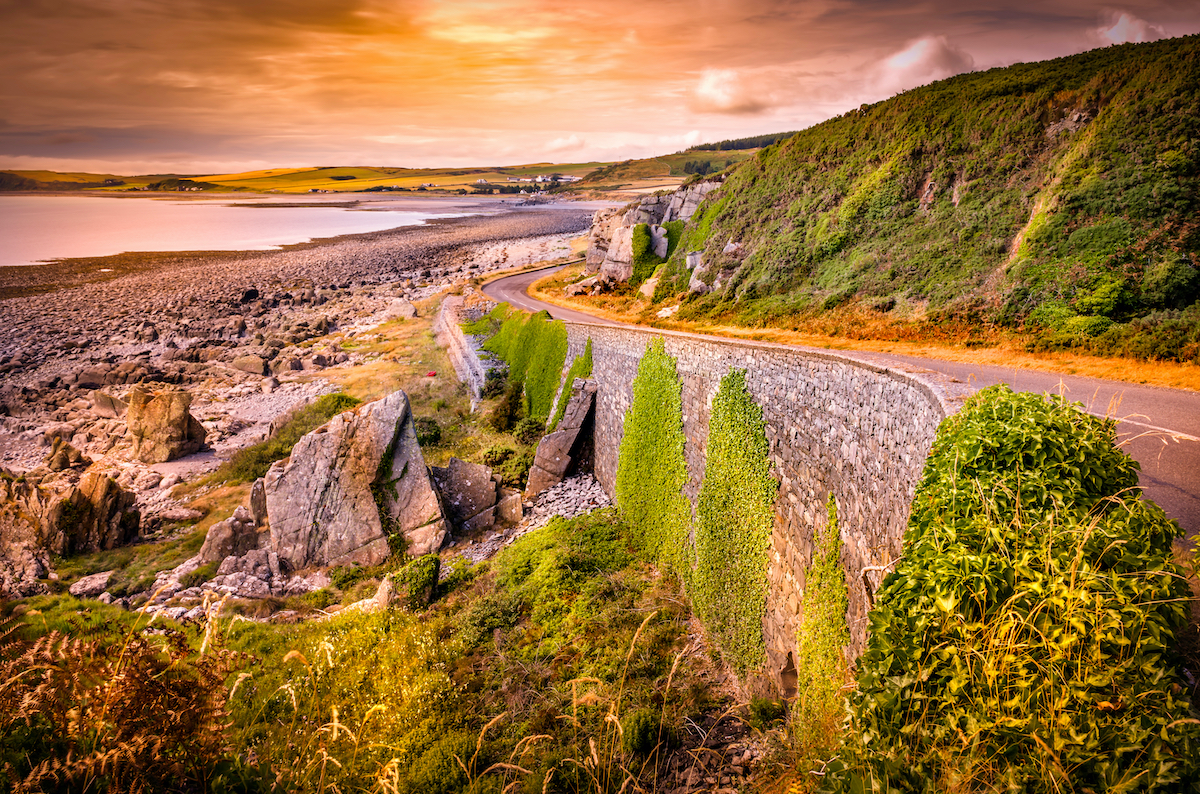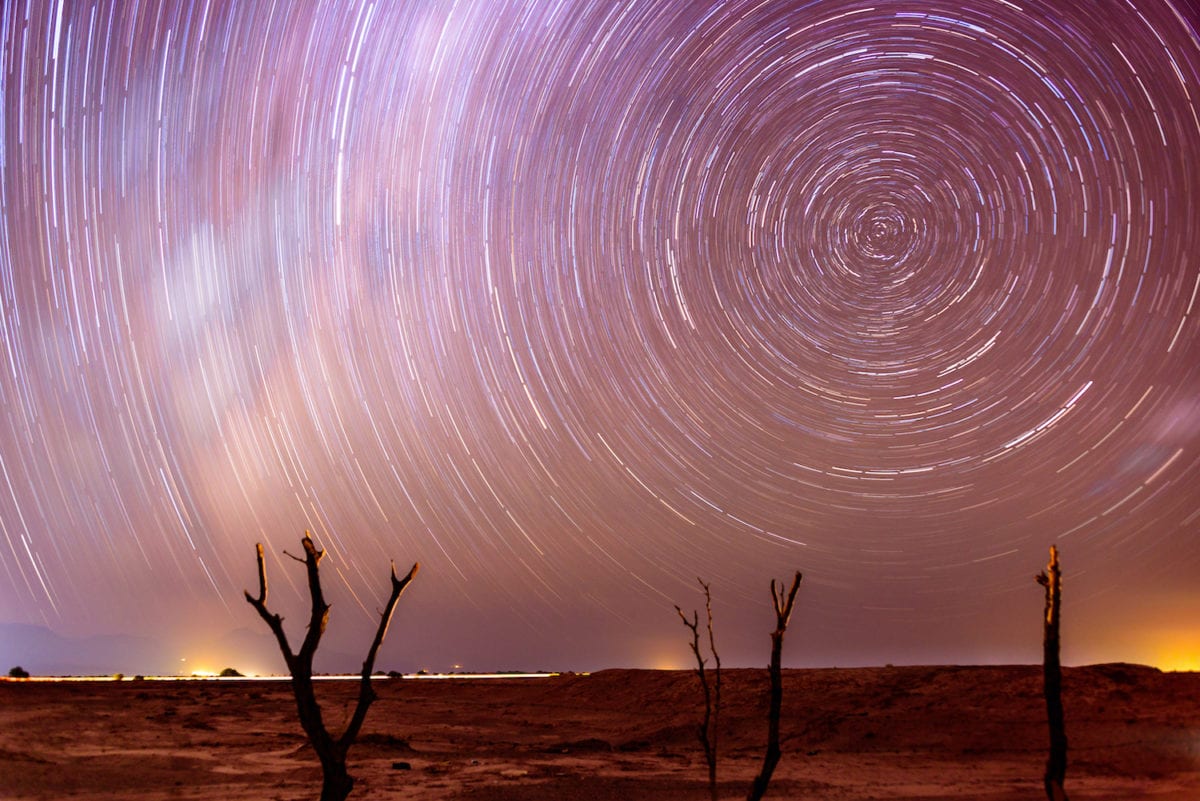Dumfries and Galloway is home to some of the most glorious scenery of the Scottish Lowlands, scenery which for this particular Scot, even after all these years, can still fill me to bursting every time I see it.
Donald Greig, co-author of Slow Travel Dumfries and Galloway
A first visit to Scotland’s southwest corner is a trip of discovery. It sounds clichéd, but time and again visitors who have come to our home in Moffat have expressed their astonishment and delight at what they have found. ‘We never knew this was here’ is the general view after we have shown them the area.
The hills and moors of the Southern Uplands combined with over 200 miles of coastline make this an ideal holiday spot, especially for anyone who loves the outdoors and wildlife. The Southern Upland Way crosses the region and brings peace and isolation for walkers, while the Colvend coast and the beaches of the Machars and Rhins are ideal family holiday territory.
Watersports enthusiasts are catered for at Loch Ken, nature enthusiasts love the marine life and wild, open spaces, and bird lovers find sanctuary at the internationally important wetlands centre of WWT Caerlaverock. Photographers and artists aren’t disappointed either: the area has long been known for its quality of light, especially along the Solway Firth and in the Artists’ Town of Kirkcudbright.
In more recent times the lack of light pollution has become celebrated, too: Galloway Forest Park, the country’s largest, was also its first Dark Sky Park. Few places offer such startlingly clear star-gazing. To top it off, this is an area where ‘slow’ living is still the norm, somewhere to take the foot off the accelerator, ease the pace and relax into a way of life that values quality not quantity, all that is local, individual and authentic.
Bradt on Britain – our Slow Travel approach
Bradt’s coverage of Britain’s regions makes ‘Slow Travel’ its focus. To us, Slow Travel means ditching the tourist ticklists – deciding not to try to see ‘too much’ – and instead taking time to get properly under the skin of a special region. You don’t have to travel at a snail’s pace: you just have to allow yourself to savour the moment, appreciate the local differences that create a sense of place, and celebrate its food, people and traditions.
For more information, check out our guide to Dumfries and Galloway
Food and drink in Dumfries & Galloway
One of the most noticeable things about the high streets of Dumfries and Galloway is that many still have an independent butcher. This is in keeping with the region’s reputation for locally produced meat, but it nonetheless comes as a pleasant surprise in a day when for many people a pre-packed joint from a supermarket is the only option. Greengrocers, too, are not uncommon, and every town has at least one baker.
This is very much a part of the world where individuality and distinctiveness hasn’t been completely lost in town centres. Castle Douglas in particular is celebrated for its range of independent shops and is the region’s official ‘Food Town’. It even has its own high street brewery. In the far west, Stranraer now hosts an annual Oyster Festival.
Local produce
Local specialities suggest the region has a sweet tooth and include Moffat Toffee (available from the eponymous shop in Moffat), Cream o’ Galloway ice cream, Galloway Lodge Preserves range of marmalades, jams and jellies, and chocolate from the Cocoabean Company. Locally produced meat and locally caught fish are both widely available, the latter notably from smokehouses in the west of the region.
A few producers to note are Galloway Smokehouse, Marrbury Smokehouse, Clash Farm and The Ethical Dairy. The Little Bakery in Dumfries has teamed up with the Galloway Cattle Society to produce the Galloway pie: Galloway beef in a rich gravy encased in a Scotch pie shell with a puff pastry top.
An increasing number of distilleries and breweries is spread across
the region making whisky, gin, rum and beer. There are also a couple of surprising producers (surprising for this part of the world, that is), one is a winery and the other a tea grower.
Farmers’ markets
Farmers’ markets are the place to go for a good cross-section of local producers. Markets are held regularly in Moffat, Langholm, Lockerbie, Dumfries, Creetown and Wigtown. Up-to-date details of where and when are posted on the Dumfries and Galloway Farmers’ and Community Markets website. Regular stalls at the markets cover an impressively wide spectrum of foods and crafts, from fudge, beer, chillies and cheese to artists, jewellers and soap-makers.
When to visit Dumfries & Galloway
January
Celebrate the Bard at the Big Burns Supper
A a seven- to ten-day musical and arts extravaganza held around Burns Night (25 January) described as ‘a non-stop, head-banging modern interpretation of what a modern celebration of Robert Burns could look like.’ Raise a glass or two to Scotland’s national bard in the city where he spent the final years of his life, Dumfries, Dumfries & Galloway.
February
Go nuts! Red squirrel spotting and walnut racing
On the edge of Lockerbie in Dumfries & Galloway is the small, yet perfectly formed Eskrigg Nature Reserve – a place that offers an almost guaranteed sighting of red squirrels. In February each year you can also join in some eccentric fun and try your hand at a spot of walnut racing.
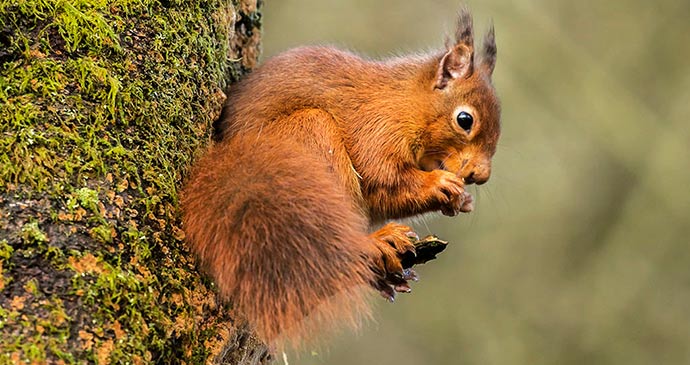
March
Snowdrops in bloom
The Scottish Snowdrops Festival runs all over the country to welcome the first signs of spring. In Dumfries and Galloway head for the Dunskey estate on the Rhins, near Portpatrick, to follow the snowdrop walks, navigate through the maze and pause for a cup of tea. Other venues include Galloway House at Garlieston; Logan Botanic Gardens on the Rhins; and Cally Woods at Gatehouse-of-Fleet.
April
Go wild in the country!
Wild Spring Festival, part of Wild Seasons, is Scotland’s largest and longest running wildlife festival with over 100 family-friendly events across Dumfries & Galloway. Go wildlife canoeing on Loch Ken, spend the day birding at WWT Caerlaverock, or even take a nocturnal wildlife tour using hand-held infrared cameras. The range of activities is impressive.
May
Enjoy a Spring Fling with the region’s artists
Billed as ‘Scotland’s Premier Art and Craft Open Studio Event’, Spring Fling involves around 100 artists and makers across Dumfries & Galloway opening their studio doors to the public to showcase their work. It’s a visual feast of unique talent hd between 23 and 25 May.
June
Classic and vintage entertainment at the Moffat Car Rally
The biggest classic car event in Scotland takes place in Moffat, Dumfries & Galloway, each year on 27 and 28 June, with 900 vintage motors from all over the world making their way to the north of Annandale. Includes live music, children’s attractions and serious engine revving. Go to www.sre-scot.co.uk for more information.
July
Langholm Common Riding
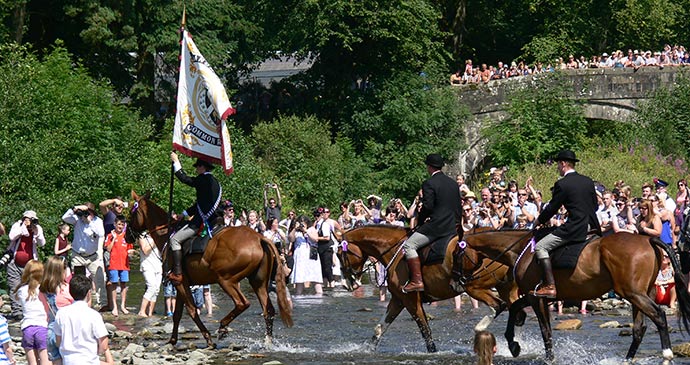
Dumfries & Galloway’s oldest continuous Common Riding is a lively affair, starting with a flute band parade at 05.00 and running until the ‘cornet’ hands back the flag at 21.30 in front of the town hall. Dozens of riders gather in Langholm’s town centre before heading out to ride the town boundaries in time-honoured tradition and then returning to parade through the town and cross the river. Last Friday in July.
August
Galloway Country Fair
A two-day event held in the grounds of Drumlanrig Castle, celebrating rural life and bringing together food and drink, country sports, entertainment, rural crafts, children’s activities and much more. www.gallowaycountryfair.co.uk
September
Lockerbie Jazz Festival
Now spreading its jazz hands wider than Lockerbie the ever popular and growing Lockerbie Jazz Festival (25–28 September) is a firm fixture on the September calender in Dumfries & Galloway. Offering a wide range of jazz and blues from Trad to contemporary, plus a tempting workshops for budding singers, concerts and a whole load of community groups performing. Events also taking place in Moffat and Annan. See www.lockerbiejazz.com for more info.
October
A page turner of an event: Wigtown Booktown Festival
Now in its 16th year, Wigtown Book Festival in Dumfries & Galloway offers more than 180 events for adults, children and young people spanning literature, music, film, theatre, arts and crafts. Running from late September through to early October, the festival has welcomed speakers such as Ian Rankin, Celia Imrie, and Joanna Lumley.
November
A dash of autumn colour at the Wild Autumn Festival
From October and on into November there are over 100 family-friendly wildlife events across southwest Scotland, including Dumfries & Galloway, enjoying spectacular autumn colours and large scale wildfowl migrations from the Arctic Circle. Part of Wild Seasons.
Where to stay in Dumfries & Galloway
For information about accommodation, see our list of the best places to stay in Dumfries & Galloway.
What to see and do in Dumfries & Galloway
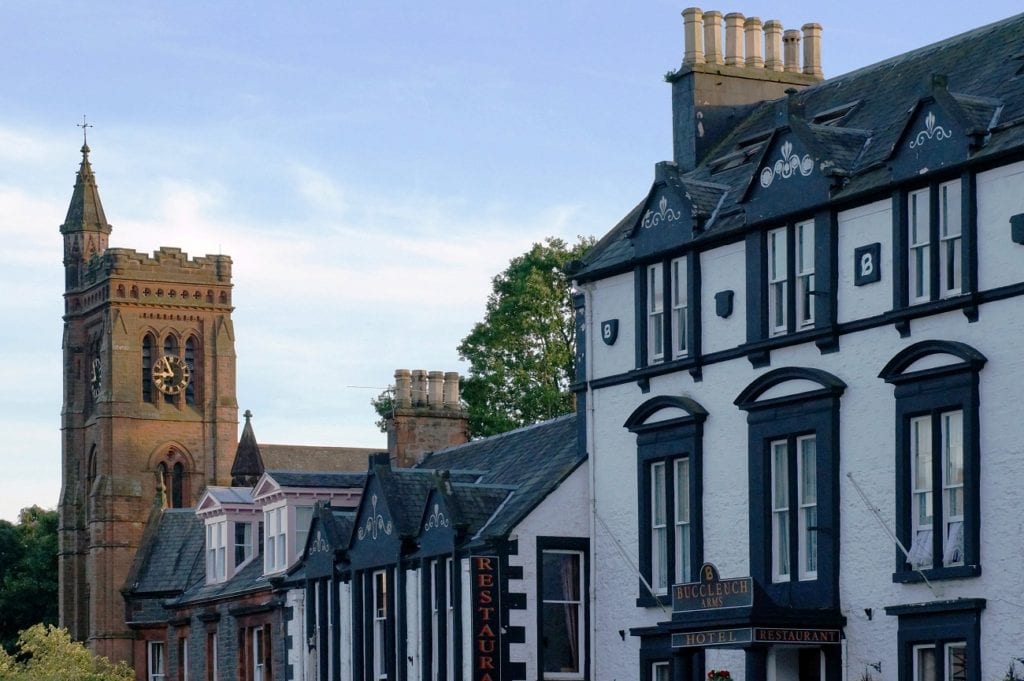
Moffat
A former royal burgh and Victorian spa town, Moffat quickly charms most visitors with its mix of quirky shops and cafés, village atmosphere, range of architecture and new distillery.
Located amid some of the Southern Uplands’ grandest scenery, it’s only around an hour’s drive from both Edinburgh and Glasgow, thus it works well for both short breaks and as a base for a longer holiday. Walkers and cyclists are in their element as nature abounds, and there are good birdlife and wildlife spotting opportunities in the area.
Moffat is also the UK’s first Dark Sky Town, having adapted its street lighting to reduce light pollution, and the Moffat Astronomy Club, with their new observatory and 16-inch Meade telescope at Hammerlands, would be pleased to hear from visitors. There are also three fixed telescope piers around the town.
Visitors are also welcomed by the Friends of Gallow Hill to assist in their mammoth tree-planting task on the northern edge of town. Since being acquired from the Earl of Annandale in a community buyout in late 2016, the hill has been planted with over 17,000 trees, with another 20,000 to go. This is also one of the nearest and easiest hills to town for walking.
The pleasantly browsable High Street lends itself to a gentle amble up one side and down the other, but do watch out when crossing over as it’s easy to forget that traffic runs in both directions on both sides of the road. At the top of the High Street a statue of a Blackface ram stands atop its cairn of piled-up stones, erected partly to honour Moffat’s historic sheep market but also, say some, in memory of Sir Walter Scott’s contemporary, poet James Hogg, ‘the Ettrick Shepherd’, who was known to drink in the town.
Fondly referred to as the Moffat Ram, it’s known more formally as the Colvin Fountain, having been presented by businessman William Colvin in 1875. Noted for its peculiar lack of ears, it was sculpted by one William Brodie, who is perhaps better known for the diminutive Greyfriars Bobby in Edinburgh.
For a local delicacy, pop into the Moffat Toffee Shop on the High Street. Well Street has a range of more specialised shops including Wallace Brothers butcher on the corner (excellent steak pies and haggis), the independent Moffat Books, Harvest Time traditional delicatessen, the Ram Shack record shop (as in vinyl), and three vintage/antique furniture and bric-a-brac shops: Lothlorien Antiques, Reloved and 27 Well St.
Towards the bottom of town is the community-run Moffat Museum, with informative displays that include a Roman brooch found in the nearby hills in 1787 and the oldest longbow discovered in Britain. Merlin, with whom Moffat and the surrounding area have strong associations, is also covered. Moffat itself lies on the Merlin Trail, the website of which also includes details of the Moffat History Trail.
Opposite the museum stands the late 19th-century St Andrew’s Church (down the side of which Santa abseils each Christmas for the annual lights switch-on), while just around the corner, at the bottom of the high street, is the old Holm Street churchyard, with the last remaining wall of the pre-Reformation church (c1600). What is obvious when walking around the site is the varying heights of the ground. In 1747, the churchyard was covered in an extra 4ft of soil to create more space for burials.
The Moffat Hills
The scenery around Moffat is among the most thrilling in the region. Here, too, is a good selection of birdlife: peregrine, merlin and golden plover may be spotted, to name a few, and possibly even golden eagle.
This area was historically of great strategic importance, for whoever controlled Upper Annandale controlled access to the north and south; today it is dotted with sites of Roman forts and the remains of medieval castles.
Our suggestion is to focus on the north and east of the region to immerse you in the surrounding countryside, areas that sit just inside the boundaries of Dumfries and Galloway and which also stray into the neighbouring Scottish Borders region. Unfortunately, public transport isn’t an option for these routes, so driving is your best bet, or cycling if you’re a very fit, regular cyclist.
Kirkcudbright
Kirkcudbright ranks highly for having one of the most confounding names in Scotland. Pronounced ‘kir-coo-bree’, the popular belief is that it is derived from the church/kirk of St Cuthbert, but it is also possible that this in itself was a derivation of an earlier name, Caer Cuabrit, meaning ‘fort on the bend in the river’.
Whatever the truth, there is no doubting that the first Christian church here was dedicated to Cuthbert, the 7th-century saint whose uncorrupted body was carried around the country in the late 9th century by monks from Northumbria fleeing attacks from the Danes. The church was most probably situated on the hill to the east of town, where St Cuthbert’s graveyard can now be found.
Kirkcudbright today is known as ‘The Artists’ Town’ and is as enticing a place as you can imagine. Compact but with wide airy streets, the old town with its brightly painted houses clusters around the remains of the 16th-century MacLellan’s Castle, which stands prominently overlooking the fishing boats moored at the harbour.
Such a mix of attractions has a timeless appeal that gives this small town a perpetual charm. It is a place to explore, to linger, and to get to know. Standing at the harbour, reflect on the fact that Kirkcudbright can claim over 800 years as a commercial port, from warfare, piracy and smuggling to passenger services and international trade. And what’s more, it’s still in use today.
The town’s most iconic attraction is Kirkcudbright Galleries, a four-storey display space housing 600 works in what was formerly the Town Hall, including some of the very best items of the nation’s holding of art and antiquities. Paintings, jewellery and correspondence from names such as the Faed family, Peploe and Jessie M King are all here, and there is an on-going series of talks, in addition to workshops, family activities and events, and a delightful café.
Just along the road from the gallery is The Stewartry Museum, which was purpose-built in 1892–93 and stepping inside is a like stepping back in time. Glass-fronted wooden cabinets are positioned around the ground floor while the upstairs balcony is fitted with glass-topped display cases of the type that are only found in museums of this vintage.
The collection is crammed with items of historical interest, from artworks and book covers to old rifles and pistols, a model railway and newspaper clippings telling the gruesome story of the ‘Lighthouse Murder’ in 1960 on Little Ross Island at the mouth of Kirkcudbright Bay. Upstairs is dedicated to natural history, with stuffed animals, birds and fish, as well as pinned butterflies and birds’ eggs.
The northern end of the high street bends round to the right on to Castle Bank, site of the remains of MacLellan’s Castle, a fine example of late 16th-century domestic architecture as it evolved from more heavily defended tower houses.
The town also has a range of shops and is particularly noted for its commercial galleries, full details of which (and more besides) can be found on the local website.
Galloway Forest Park
At 300 square miles, Galloway Forest Park is Britain’s largest. Established in 1947 and sometimes referred to as ‘the Highlands of the Lowlands’, it encompasses some of the region’s most dramatic scenery and the highest peak of the Southern Uplands, Merrick (2,766ft) – part of the range of ‘The Awful Hand’, so-called because of its resemblance to fingers. No matter what sort of outdoor pursuits you’re looking for, there’s every chance you will find it here. Notable are the 7stanes mountain biking centres at Glentrool and Kirroughtree.
The park has a particular reputation as the first Dark Sky Park in the UK. With a resident population so small that light pollution is minimal, Galloway has some of the darkest skies in Europe. Over 7,000 stars and planets are visible with the naked eye from here and the nightly show changes constantly as the seasons pass.
On the Sky Quality Meter scale, the night sky of the park scores between 21 and 23.6. The scale runs from 0 to 25 and in the middle of a major city the reading would be around 8, while in a photographer’s dark room it would be 24. This really is the place to come for some uninterrupted stargazing.
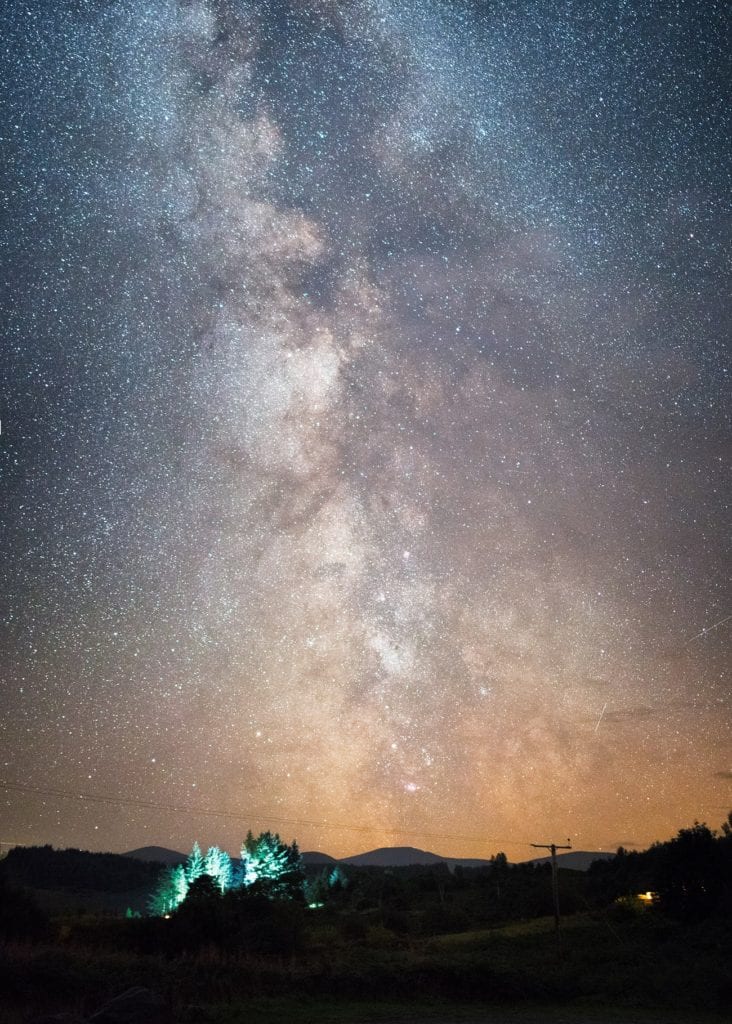
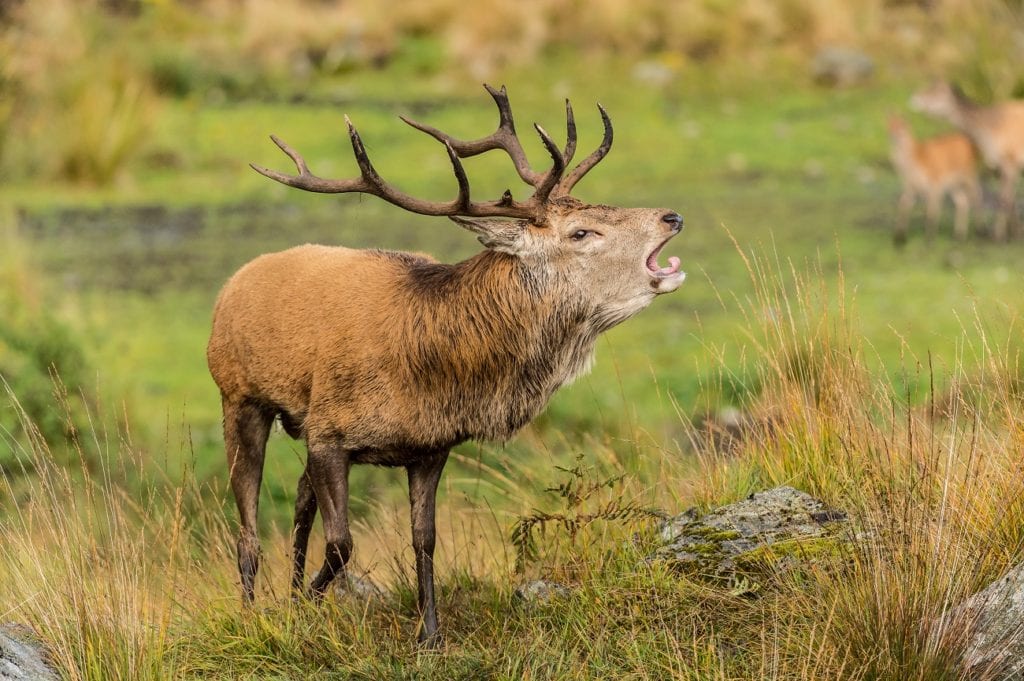
There are three worthwhile visitor centres in Galloway Forest Park (at Clatteringshaws, Glentrool and Kirroughtree), but Forestry and Land Scotland is actively involved in developing its assets for local enjoyment, often working in partnership with local community and arts initiatives to enhance the natural environment. Sculptures are positioned around the forest, for example, and parts of the forest have also been used for experimental music and light installations. Keep an eye on the website to see what is going on when you are here.
For a full daytime experience of the park, head out along the Raiders’ Road Forest Drive, which for most of its way follows an old drove road featured in the book The Raiders by local author S R Crockett. This ten-mile track runs through the forest from the west side of Loch Ken to Clatteringshaws, passing Stroan Loch and viaduct along the way. Further along, about halfway, is the Otter Pool, a lovely riverside picnic spot (with toilets).
For grand views and an eclectic range of attractions, the A712 from New Galloway to Newton Stewart, known as the Queen’s Road, makes for a fine leisurely amble.
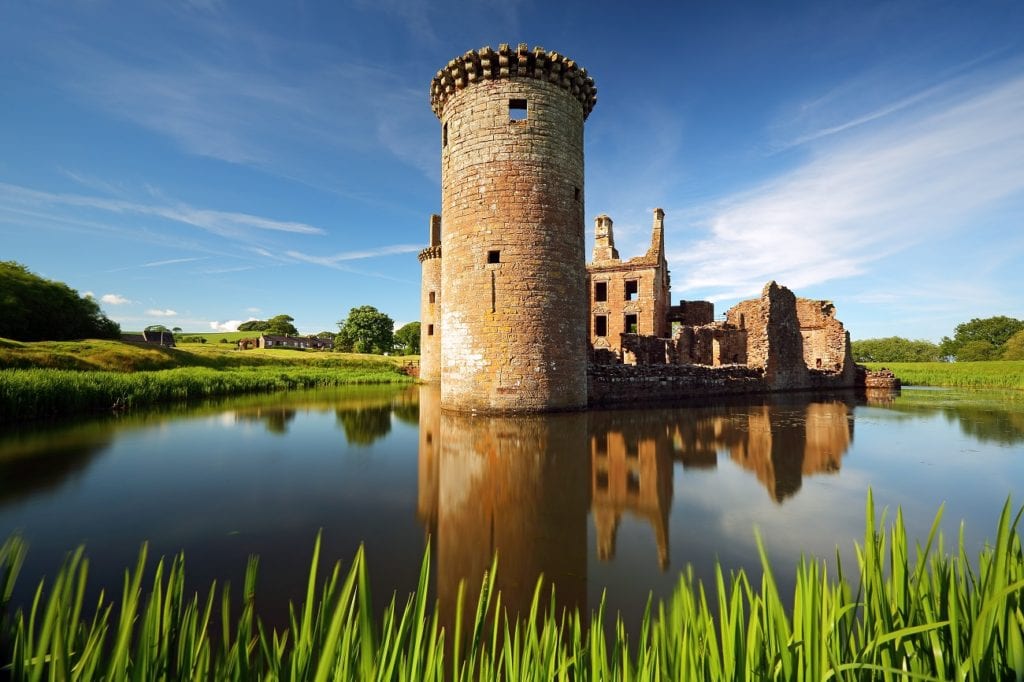
Caerlaverock
The Caerlaverock Estate, owned by the Lords Herries of Terregles, covers 5,200 acres on the east side of the Nith, encompasses the villages of Glencaple and Bankend, and includes several farms which incorporate arable land, permanent pasture, wetlands and woodlands. The estate also includes part of the Caerlaverock National Nature Reserve managed by Scottish Natural Heritage, part of which is in turn managed by the Wildfowl and Wetlands Trust (WWT).
For visitors, the main attractions are walking and wildlife watching, and visiting the splendid Caerlaverock Castle, dating from the 13th century and now in the care of Historic Environment Scotland.
WWT Caerlaverock Wetland Centre
WWT Caerlaverock is, in our view, one of the absolute highlights of Dumfries and Galloway. If you have an ounce of interest in wildlife, or simply in being outdoors in a beautiful place, you could easily lose yourself for a day – or longer – here.
And kids will love it, too. There are family events throughout the year, balance beams and stepping stones, pond dipping in the summer, and a tower to be climbed that offers terrific views over the wetlands and that houses what are believed to be the largest binoculars in Scotland (not yet restored, but they’re working on raising the funds for it).
It’s an international place, with connections around the world. In winter the Icelandic and Norwegian flags are flown, the former for the whooper swans and the latter for the barnacle geese, for it is to the Solway coast each year that the entire population – all 40,000 of them – returns from Svalbard, around 10,000 of which are usually to be found in the WWT reserve. Several bird hides offer good vantage points, and the Sir Peter Scott Observatory is an impressive state-of-the-art facility at the whooper swan pond, complete with touchscreen swan database.
There are trails to be followed and nests to be spotted, evening events and occasional walks accompanied by rangers. And when it all gets too much, you can always retreat to the Cathan Coffee Shop in the visitor centre.
Caerlaverock National Nature Reserve
Covering almost 20,000 acres, Caerlaverock National Nature Reserve is a vast flat expanse of sand, sea, mud and merse (saltmarsh) stretching almost ten miles along the Solway Coast south of Dumfries. Around 85% of the area is made up of tidal flats and mudbanks that disappear at high tide. This is a haven for wildlife of all sorts, from birds to the rare natterjack toad.
This is a truly special place. Unlike many other firths, the Solway Firth remains in a largely natural state, undisturbed for the main and, for the birds that return year after year, a vast natural larder on the saltmarshes and mudflats. Local farmers subscribe to the ethos of the area, too, providing safe grazing for geese in their fields, with any costs incurred being met by the Solway Goose Management Scheme managed by Scottish Natural Heritage.
Visitors can access both the nature reserve generally, which is free of charge, and the WWT reserve, for which either membership is required or an admission fee is charged for non-members.
Mull of Galloway
The Mull of Galloway is Scotland’s most southerly point (latitude 54.6351°N) and actually further south than Penrith and Hartlepool. It’s an awesome and inspiring place: indeed, one guidebook writer in the 1950s described it as: ‘grand, high and frightening. A great point of headland thrust down in to the southern seas, a fortress whose stacks of cliffs bristle with knives and spears of rock, buttresses and crenelated and corbelled’. Nothing has changed.
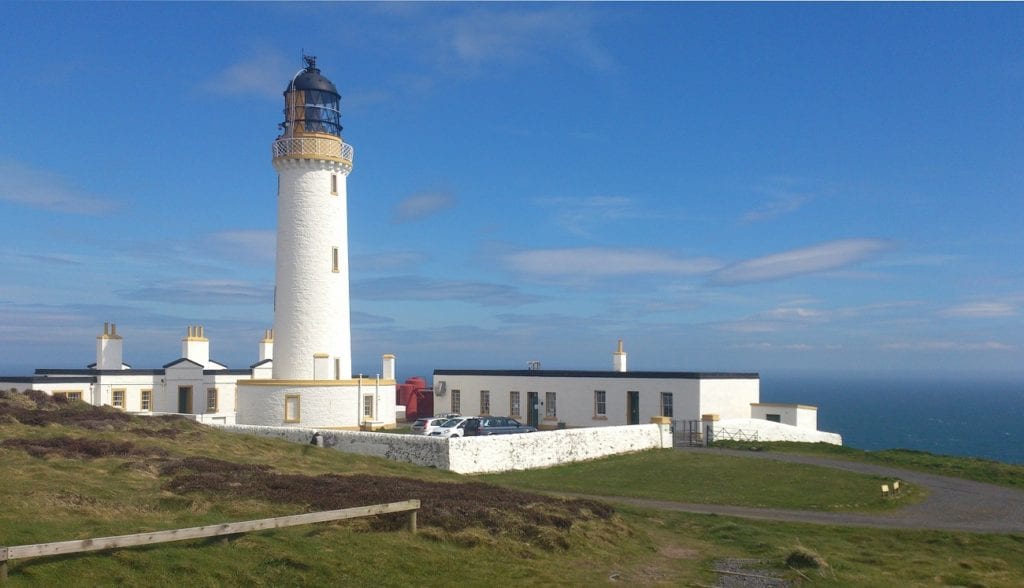
The Mull of Galloway Experience
The Mull of Galloway Experience includes the lighthouse and associated buildings run by the Mull of Galloway Trust, adjoining RSPB reserve, and the superbly positioned Gaille Craig Coffee House , built on the very edge of the cliffs with a grass roof and vertiginous drop from the terrace. At the lighthouse itself is the main tower (small charge) and lighthouse keeper’s cottages, which are now run as holiday lets, plus an exhibition (small charge) in the engine room. Movie buffs will know that the lighthouse was the main setting for the 2018 Gerard Butler film, The Vanishing.
There are 93 steps from the bottom of the lighthouse tower up to the first gallery, followed by two ladders, one to reach the outside viewing platform and another from there up to the light itself. The views are worth it: to Ireland and the Mountains of Mourne in County Down, and to the Isle of Man, just 19 miles away (and yet so far if you want to go there; the nearest ferry from the mainland departs from Heysham, just under 200 miles away). On a clear day you can see to Cumbria, too, and of course eastwards across to the Machars and north back up the Rhins. There’s no disabled access to the tower, but there is an accessible viewing platform at ground level and access to the exhibition.
This is a good place to bring the kids, with lots to see and do. Come on a Sunday if you can to hear the foghorn at 13.00. Brought back into working order almost single-handedly by volunteer Stevie Burns, it is the only one working on mainland Scotland and produces the most extraordinary, evocative sound that reverberates off the cliffs and out to sea, conjuring up images of days past when ships relied on it to navigate safely.
The sound is unique, as it was for all foghorns, so that ships could identify which one they were hearing. Incidentally, if you choose to get married here, not only can you tie the knot at the top of the lighthouse tower, but the foghorn can be sounded to mark the occasion.
The exhibition is fun: huge red tanks that fill with compressed air for the foghorn, an explanation of semaphore and a chance to try out your Morse code, a display on lighthouse keepers past, and the story of James Birnie, the ghost of the lighthouse, who was the only keeper who actually died here.
RSPB Mull of Galloway Reserve
Minke whales, porpoise and dolphins, puffins and guillemots are all visitors to the area, and adjoining the Mull lighthouse is the 30-acre RSPB Mull of Galloway Reserve. The main display is housed in a cottage that was home to the workers who built the lighthouse. The reserve consists mostly of maritime heath and cliffs, but also includes the Scare/Scaur Rocks six miles out to sea, and a wide range of birds can be spotted here.
A seasonal ranger runs the reserve and can point out other wildlife, including voles, mice, roe deer, a quite spectacularly iridescent beetle (the rose chafer beetle), and, controversially, weasels, which pose a threat to ground- and low-nesting birds.
Related books
For more information, see our guide to Dumfries & Galloway:
Related articles
Forget the North Coast 500 – there’s a new Scottish driving route in town.
Look at the stars, look how they shine for you.
Enter the world of Peter Pan at the National Centre for Children’s Literature and Storytelling.
